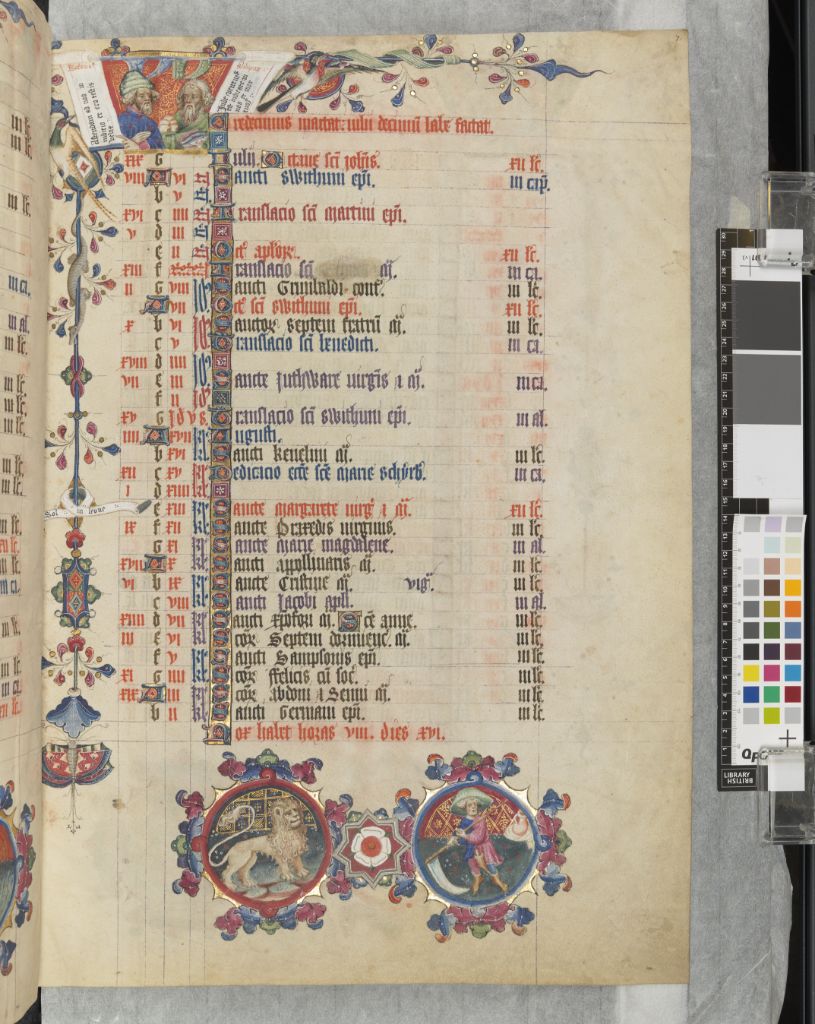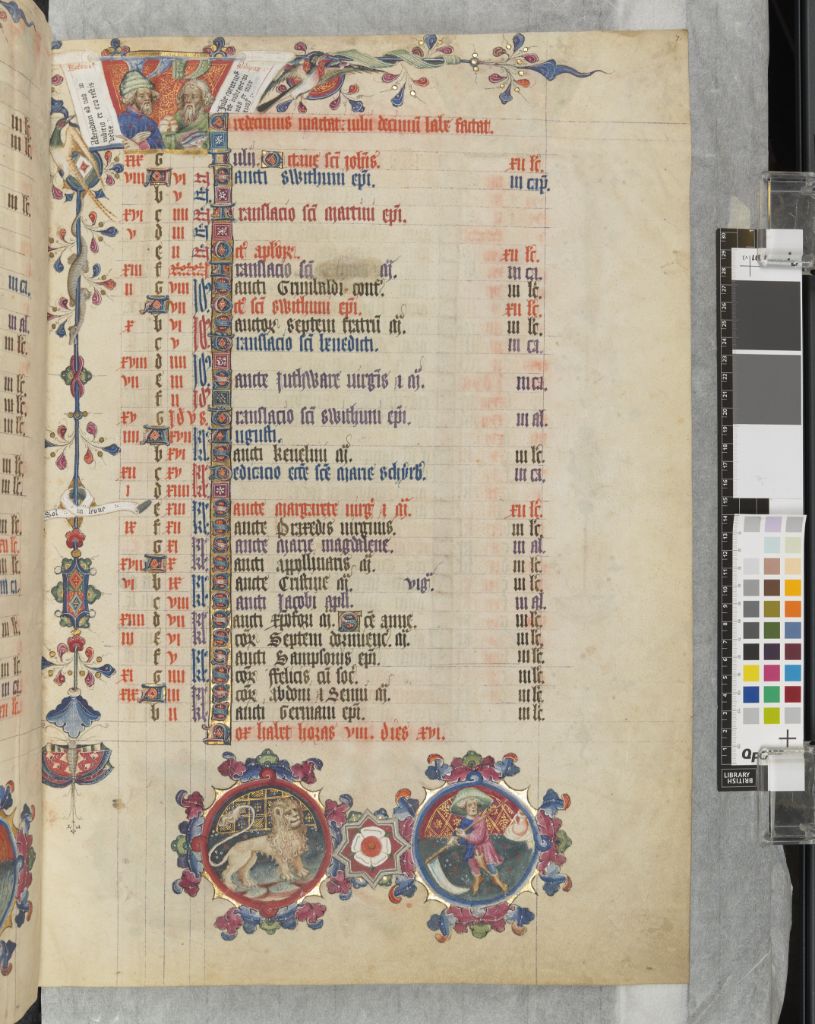OK, brace yourselves, because here comes a REALLY LONG THREAD on liturgical calendars, starring the great Sherborne Missal (a.k.a. @BLMedieval Add MS 74236): http://access.bl.uk/item/viewer/ark:/81055/vdc_100104060212.0x000001#?c=0&m=0&s=0&cv=12&xywh=574%2C1754%2C1869%2C1751">https://access.bl.uk/item/view...
Ever found yourself flummoxed by medieval liturgical calendars? I’m here to break it down for you, using the extraordinary Sherborne Missal because this calendar HAS IT ALL! http://access.bl.uk/item/viewer/ark:/81055/vdc_100104060212.0x000001#?c=0&m=0&s=0&cv=12&xywh=-1187%2C-1%2C7767%2C6780">https://access.bl.uk/item/view...
OK, here we go, Liturgical Calendars 101. Liturgical calendars are designed to give a lot of information in a small space and are incredibly efficient. This manuscript has one month per page. We’re looking at folio 4r, a.k.a. July.
We’ll start with the borders. In the upper left, we find pairings of one of the twelve Old Testament prophets with one of the twelve apostles. In this case, King Solomon and St. Philip. The quotes on their banderoles go together as well; the OT is meant to presage the NT.
In the center of the left margin, a banderole indicates the zodiac transition from to Leo on July 20.
In the lower margin, we see the usual pairing of the zodiac (now THAT’s a lion! Look at those curls!) with the Labor of the Month, in this case harvesting hay.
Now let’s look at some accessory texts. On the top line is a verse that explains which days in the month are good and bad luck (known as “Egyptian Days,” hence the whole series, from Jan. – Dec., are called “Egyptian Day Verses.”).
This particular series is quite common in liturgical manuscripts from England. January begins the series, with “Prima dies mensis: et septima truncat ut ensis.”
At the bottom is a different text, describing how many hours of day and night are to be had in that month: “Nox habet horas VIII, dies XVI” Sixteen hours of daylight! It is July in England, after all. A calendar from a lower latitude would give different lengths.
Now we’ll look at the main text of the calendar, column by column, starting with the widest column, the actual saints’ calendar. Most of the days are filled with the name of the saint whose feastday is celebrated that day, or a feast associated with them.
July 1, for example, is the Octave of (eighth day after) the Feast of St. John the Baptist. The days use a colorful hierarchy, which is, as @gundormr pointed out, not entirely understood: black, red, purple, & blue. The names in colors are clues to the origin of the manuscript.
(a really useful resource for looking up saints, by the way, is Grotefend’s Heiligenverzeichnis: http://bilder.manuscripta-mediaevalia.de/gaeste//grotefend/grotefend.htm)">https://bilder.manuscripta-mediaevalia.de/gaeste//g...
In purple, for example, we’ve got St. Juthwara on July 13. The internet reports that her relics are in…Sherborne!
Here in blue on July 18 is the commemoration of the Dedication of the Church of St. Mary of…Sherborne! That’s another clue, I think...
On July 7 in purple, we’ve got the Translation of St. xxxxx. What happened here? This is a typical example of the material impact of the Reformation. This is the feast of the Translation of the relics of St. Thomas Becket, who was canceled by King Henry VIII in 1538.
Now let’s look at the other columns. To the left of the saints are two columns (in red and alternating colors) that give the date using the Roman system of Nones, Ides, and Kalends. St. Juthwara’s feast day, for example, is the Third of Ides, a.k.a. July 13.
This is a universal calendar, designed to be used from year to year regardless of what day of the week January 1 fall on in a given year. But, in order to say your prayers properly, you need to know what day of the week each feast falls on. Hence the next column, letters A-G.
If this is an [A] year, then any feast on an [A] day is Sunday, and so on. These are called Dominical Letters.
To the left is a column with Roman numerals i through xix. These are the Golden Numbers (the date of the new moon in a 19-year cycle). When combined with the Dominical Letters, this calculates the date of Easter (new moon + the first Sunday after the spring equinox, obvs).
Finally, there’s one more column, to the right of the Saints – this one indicates the extent of the liturgy associated with the feastday (three lessons or the full twelve lessons, e.g.).

 Read on Twitter
Read on Twitter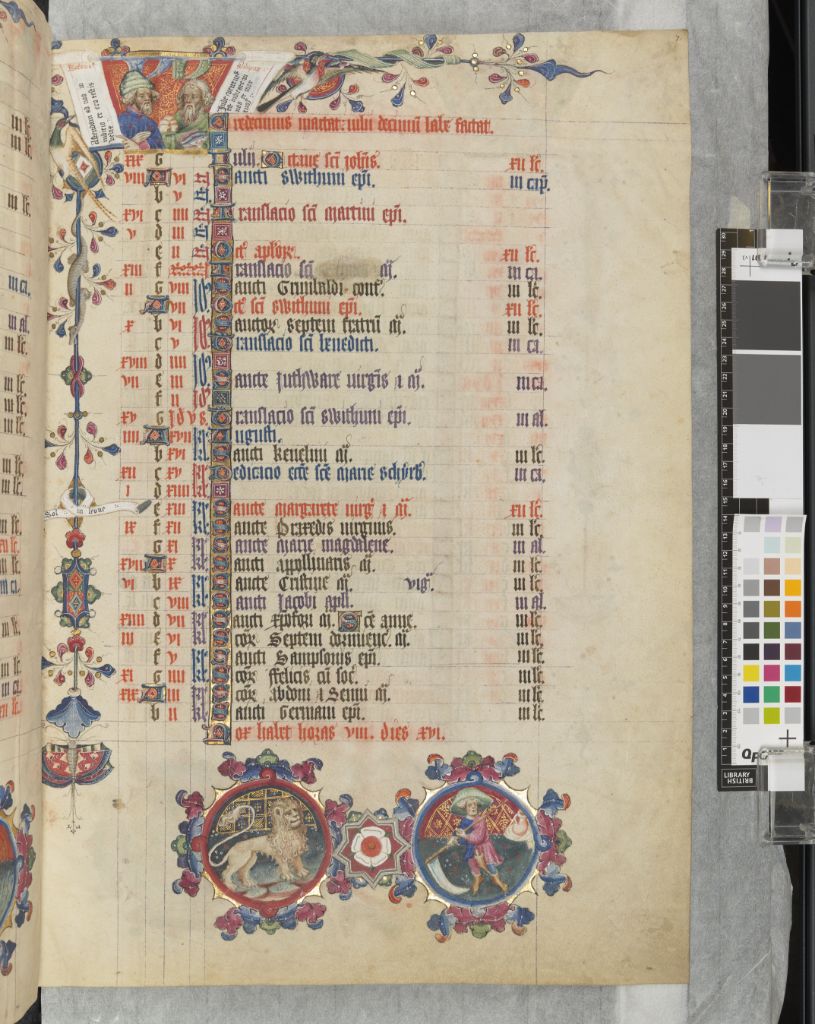


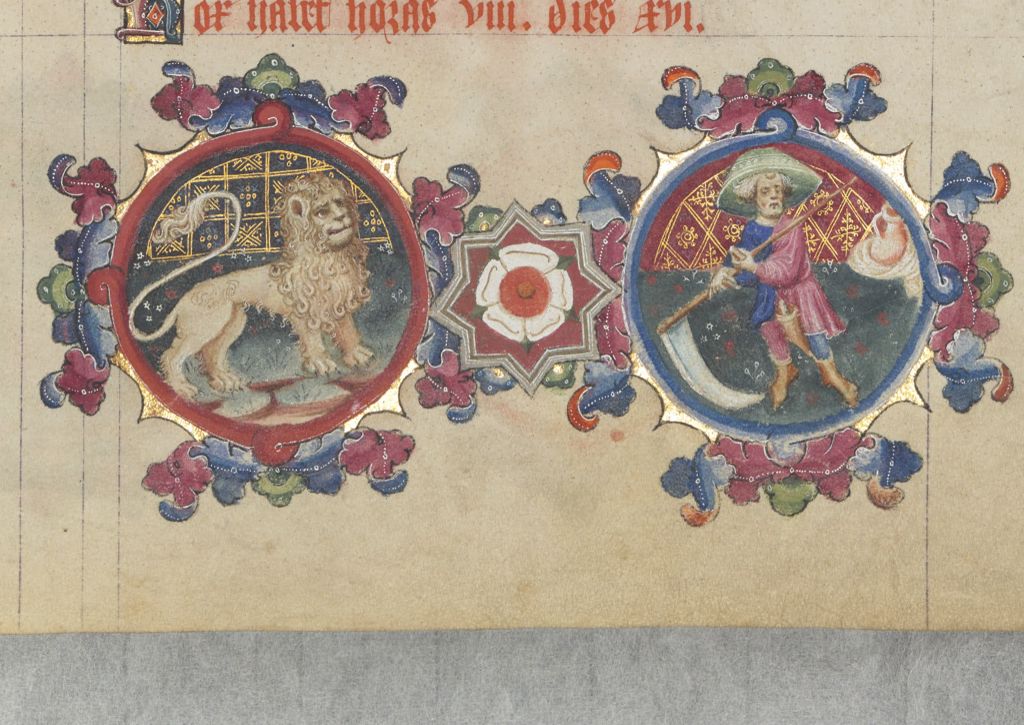
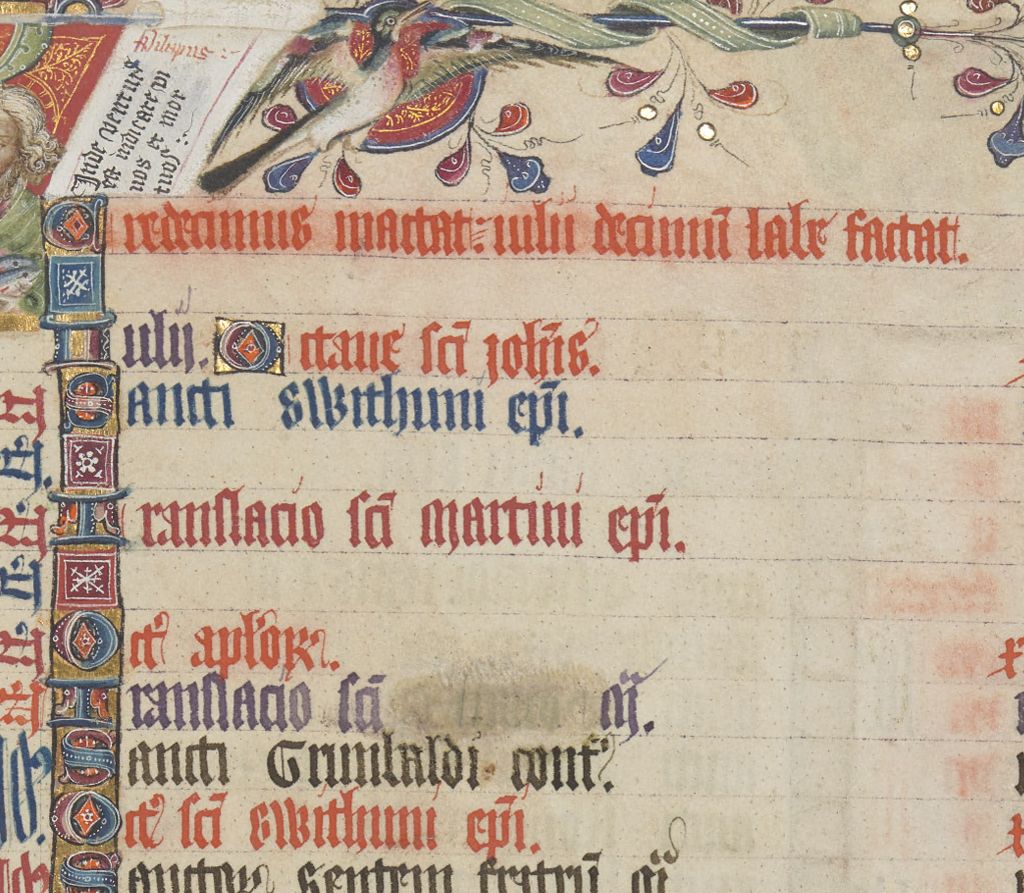
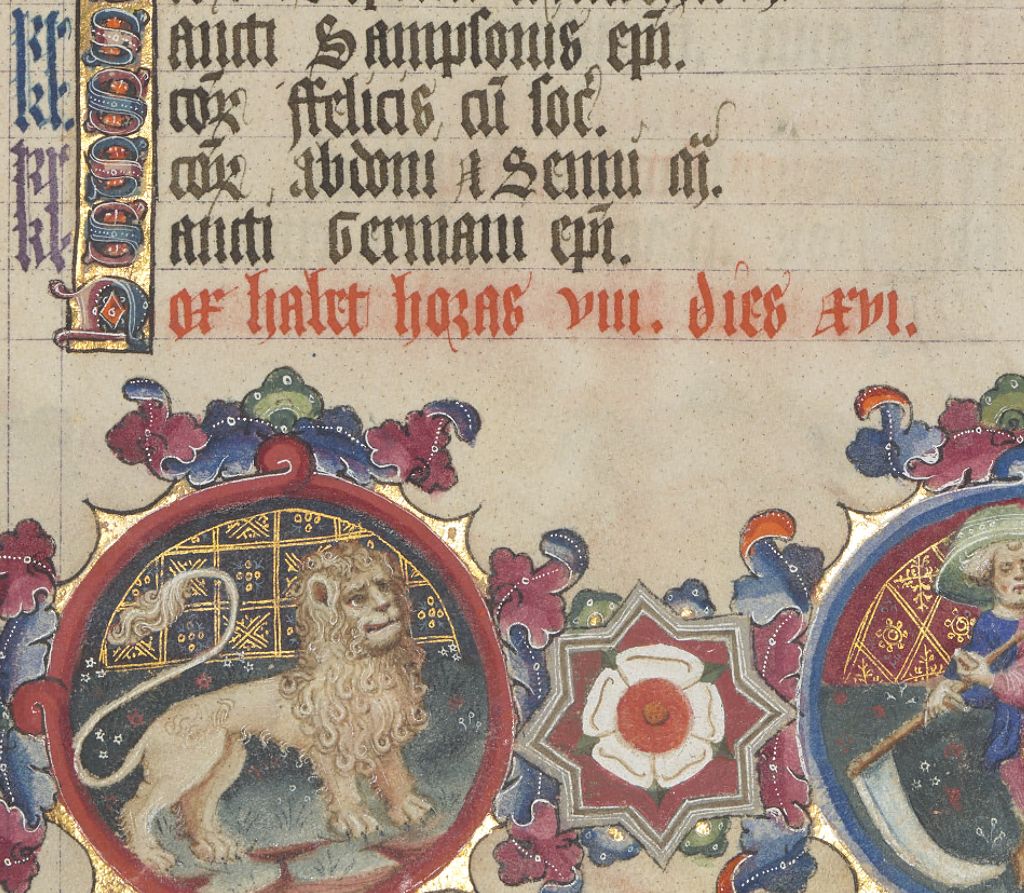
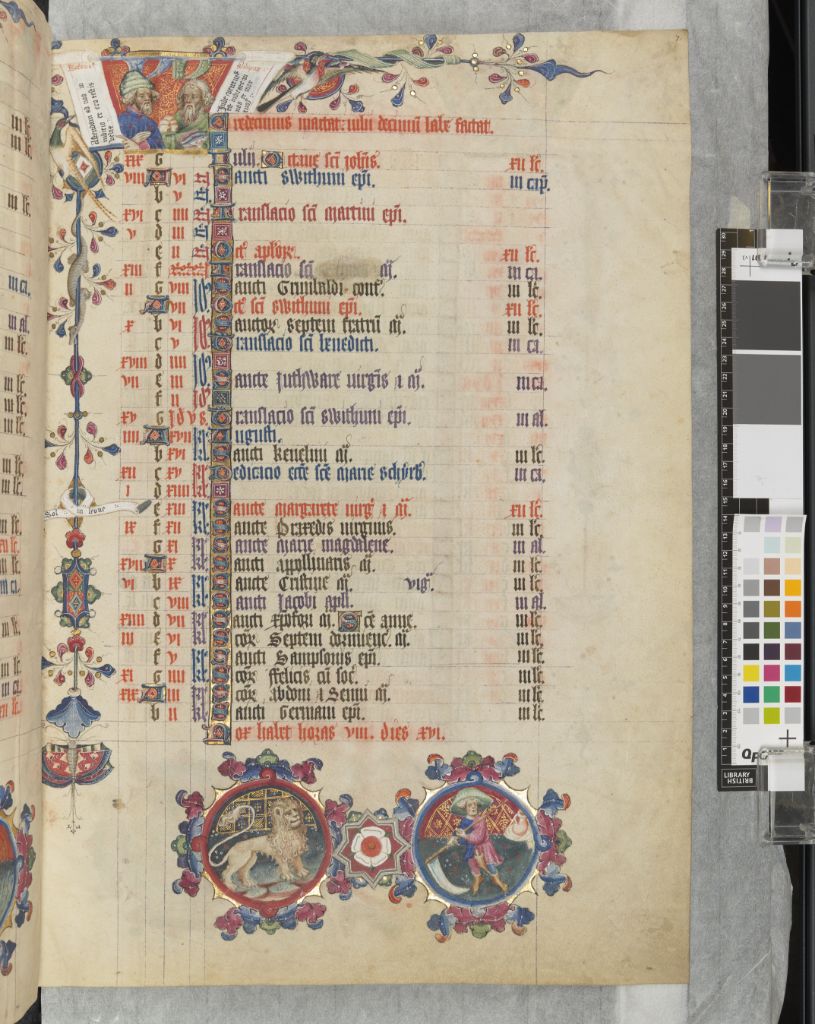
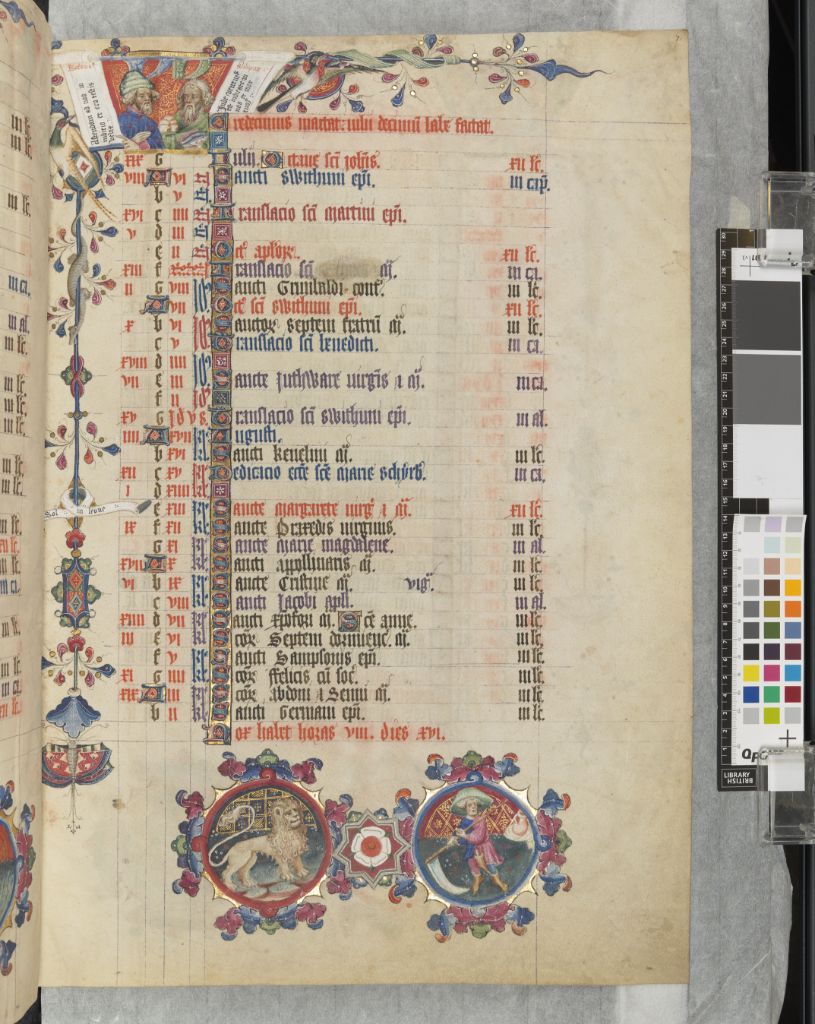





![If this is an [A] year, then any feast on an [A] day is Sunday, and so on. These are called Dominical Letters. If this is an [A] year, then any feast on an [A] day is Sunday, and so on. These are called Dominical Letters.](https://pbs.twimg.com/media/EgdZKTEXcAIwe0L.jpg)

